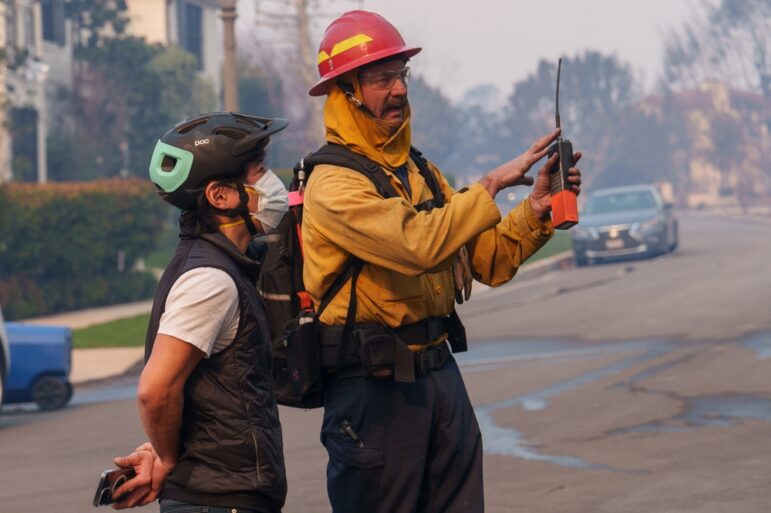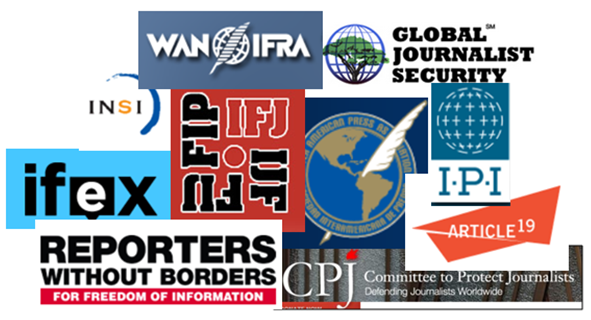

Safety and Security
Read this article in
The figures are grim for our colleagues around the world. Since 1992, more than 1,400  journalists have been killed, according to the Committee to Protect Journalists. Well over 890 of them have been murdered with impunity; that is, no killer was ever brought to justice. And today, more than 274 journalists are in prison worldwide, many for doing what would be considered routine reporting in much of the world. The problem, moreover, appears to be growing worse. The latest data show attacks and killings at near-record levels. Although high-profile killings of Western journalists — like Marie Colvin or Daniel Pearl — get international attention, the vast majority of fatalities are staff members of local media. And the killings are the tip of the iceberg. Beatings, kidnappings, imprisonment, and threats against journalists are far more numerous and can be just as effective at silencing them.
journalists have been killed, according to the Committee to Protect Journalists. Well over 890 of them have been murdered with impunity; that is, no killer was ever brought to justice. And today, more than 274 journalists are in prison worldwide, many for doing what would be considered routine reporting in much of the world. The problem, moreover, appears to be growing worse. The latest data show attacks and killings at near-record levels. Although high-profile killings of Western journalists — like Marie Colvin or Daniel Pearl — get international attention, the vast majority of fatalities are staff members of local media. And the killings are the tip of the iceberg. Beatings, kidnappings, imprisonment, and threats against journalists are far more numerous and can be just as effective at silencing them.
Threats come from many directions: from drug cartels or rebel groups; autocratic governments or ethnic enemies; stray bullets or terrorist bombs. Indeed, it may be the widely disparate nature of the threats that make a “one size fits all” solution so elusive.
Half a dozen professional organizations are actively engaged in the problem, as are representatives of major multilateral organizations, among them the United Nations and the Organization for Security and Cooperation in Europe.
As part of the Global Investigative Journalism Network’s series of Resource Pages, we are publishing this guide to safety for those working in the news media. We begin with links to several of the key guides available on the topic, followed by a directory of major international press freedom and safety groups that concern themselves, in some fashion, with the issue of violent attacks on journalists.
Guides for Staying Safe and Covering Conflict
The Digital Safety Training for Ukrainian Journalists and Civil Society by Natalia Antonova and the Institute for Security + Technology (IST). The guide includes interesting tips for journalists worldwide, like the section on “How to Do Digital Triage in Time of War”. Available also in Ukrainian.
How to report safely: Strategies for women journalists & their allies. A self-directed free course organized by the Knight Center for Journalism in the Americas, in partnership with the International Women’s Media Foundation and UNESCO, with financial support from the Swedish Postcode Foundation. The instructor is Alison Baskerville is a documentary photographer and personal safety trainer. Modules include: Situational awareness and personal safety, harassment and gender-based violence, self care and mental well-being. (2021)
What to Do When Authorities Raid Your Home: The core of our advice today relates to how you should behave during a search. Experience shows that the officers are slightly more restrained when they see that a person knows their rights (2021).
What to Do When You Or Your Sources Are Being Followed: how to detect and deal with physical surveillance from NICAR21 data journalism conference (2021).
Committee for the Protection of Journalists’ Safety Kit: CPJ’s four-part Safety Kit issued in 2018 provides journalists and newsrooms with basic safety information on physical, digital, and psychological safety resources and tools. Español, Français, العربية, Русский, Somali, ارسی, Português, 中文, Türkçe, မြန်မာဘာသာ. In addition, CPJ issues Safety Notes, such as 2019 additions on Physical safety: Solo reporting and Physical safety: Mitigating sexual violence. Also see CPJ’s U.S. elections 2020: Journalist safety kit.
The Safety Guide for Journalists: A handbook for reporters in high-risk environments was updated in 2017 by Reporters Without Borders and UNESCO. It is available in English, French, Spanish, and Portuguese.
A Culture of Safety (ACOS) Alliance is a coalition of news organizations, freelance journalists associations, and press freedom NGOs working together to champion safe and responsible journalistic practices. Their resources include a safety self-assessment tool, safety principles, safety checklists, and more. Many resources available in Arabic, French, Hebrew, Persian, Portuguese, Russian, Spanish, and Turkish.
Security Manual for Protest Coverage, by Abraji (The Brazilian Association of Investigative Journalism). You can access the full manual in English here, in Portuguese here and in Spanish here. See the sections on covering street protests here.
Safety Handbook for Women Journalists: This 95-page guide done in 2017 by the International Association of Women in Radio and Television is aimed at women journalists, is heavy on conflict zones and war reporting, and includes sections on risk assessment, online harassment, and travel safety. Arabic
Covering demonstrations and civil disorder: This guide from the International News Safety Institute covers how to plan for an assignment, what equipment to carry, and what to watch for on the ground.
The Hong Kong Protests: An FCC Workshop Series for Journalists: A series of webinars done in 2019 by The Foreign Correspondents’ Club, Hong Kong. Some slide shows included.
23 guidelines for journalists to safely cover protests: Prepared by The Poynter Institute, these suggestions came out during the 2020 US protests following the killing of George Floyd in Minneapolis, Minn.
What to do if you’re exposed to tear gas This 2019 guide from Popular Science magazine covers how to protect yourself and others.
Tips for staying safe while covering violent protests A 2017 article by Jorge Luis Sierra, translated and republished in English by IJNet. See original in Periodistas en Riesgo here.
A guide for journalists covering protests This 2017 guide by the US group Muckrock concentrates on how US journalists can manage the security of their devices and reporting materials when covering protests.
13 security tips for journalists covering hate online from Harvard Kennedy School Shorenstein Center Journalist’s Resource.
This 2020 COVID-19 Safety Protocol, launched by the ACOS Alliance, helps news organizations respond to the challenges brought on by the pandemic, with a focus on the safe commissioning of freelance journalists. Its tips and tools, though, can be applied widely toward coverage during a crisis. Available also in Arabic, French, and Spanish.
Safe + Secure in 2019 issued a handbook and issue-checklists “containing the best resources we could find on safety and security issues facing documentary filmmakers and where to go to get more information and/or training.”
5 tips from IPI for journalists experiencing harassment This 2020 article is by the International Press Institute, which has published newsroom protocols on how to support journalists experiencing online harassment. IPI also created other resources about online harassment.
Online SOS resources for journalists facing online harassment, including checklists, expert guides and resource lists.
The Online Harassment Field Manual by PEN America in 2017 contains “effective strategies and resources that writers, journalists, their allies, and their employers can use to defend against cyberhate and fight online abuse.”
The Safety Net Manual subtitled “Guidelines for Journalists in Extraordinary or Emergency Situations,” was created in 2017 by the South East Europe Media Organization. In English and 11 regional languages.
Police, Protestors, and the Press. Mainly legal advice from the US group Reporters Committee for the Freedom of the Press, updated in 2020.
Radio Television Digital News Association Guidelines: Civil Unrest. Suggestions from this US group focus a bit on safety, but mainly deal with how to report, for example, “Do not assign motives to anyone; you cannot know what people think or feel, only what they say or do.”
Online Harassment of Journalists: Attack of the Trolls: Reporters Without Borders (RSF) enlisted its worldwide network of correspondents in 12 bureaus to help shed light on the latest danger for journalists – threats and insults on social networks that are designed to intimidate them into silence. RSF in 2018 put forward 25 recommendations for governments, international organizations, online platforms, media companies and advertisers to respond to these virulent online campaigns. (In French) See GIJN summary.
Media Professionals and Armed Conflict, a 2017 handbook by the British Red Cross and the British Institute of International and Comparative Law (BIICL).
Reporting for Change: Handbook for Local Journalists in Crisis Areas was developed in 2009 by the Institute for War and Peace Reporting and includes a chapter on war zone security. It is available in English, Arabic, Farsi, Russian, Kazakh, Kyrgyz and Tajik.
The James W. Foley Legacy Foundation developed journalist safety curricula for undergraduate and graduate schools. Includes modules on risk assessment, interviewing hostile sources, protecting digital data, and more.
How to Prevent, Identify and Address Vicarious Trauma — While Conducting Open Source Investigations in the Middle East, a 2018 article by Hannah Ellis, a research assistant at the Berkman Klein Center for Internet & Society at Harvard University.
Freelance Files: For Freelancers in Conflict Zones, Help Is out There, a colorful 2017 article by Dale Willman on the Society for Environmental Journalists website.
Journalism and Vicarious Trauma: A Guide for Journalists, Editors and News Organisations This 2017 handbook from Sam Dubberley and Michele Grant is about the challenges posed by vicarious trauma and provides practical tips and guidance.
International Women’s Media Foundation offers safety training tailored to female journalists. See their list of resources here.
Self-care for Journalists, “a practical guide” in Powerpoint presented at NICAR2019.
The Journalist Survival Guide has nine animated lessons, including how to handle tear gas. Produced in 2012 by the SKeyes Center for Media and Cultural Freedom at the Samir Kassir Foundation, it is available in English and Arabic.
Emergency Protocol Case Study, by Ivan Golunov, an investigative reporter for the Russian newspaper Meduza. This GIJC19 presentation explains what steps Meduza took when Golunov was arrested.
Groundtruth: A Field Guide for Correspondents Includes guidelines to provide journalists with a set of principles and practices in the field. Also essays by veteran journalists, mostly circa 2009. See a 2019 article: Five tips to protect yourself from threats and harassment.
Journalism Safety and Security Groups
A Culture of Safety (ACOS) Alliance was formed in late 2015 by major news companies and journalism organizations to improve worldwide freelance protection standards.
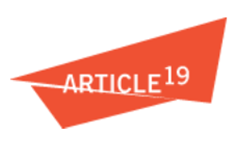 Article 19: Based in London. Article 19 monitors, researches, publishes, lobbies, campaigns, sets standards and litigates on behalf of freedom of expression wherever it is threatened. Its work includes campaigns to protect journalists from threats to their lives, families and livelihoods.
Article 19: Based in London. Article 19 monitors, researches, publishes, lobbies, campaigns, sets standards and litigates on behalf of freedom of expression wherever it is threatened. Its work includes campaigns to protect journalists from threats to their lives, families and livelihoods.
 Committee to Protect Journalists (CPJ): Based in New York. Founded in 1981 and managed by a board of directors of journalists, CPJ produces annual country reports, conducts international missions, and maintains its Impunity Index, among many other aggressive activities. CPJ’s Journalist Assistance Program provides legal, medical, and relocation assistance to journalists at risk, along with support for families of slain and imprisoned journalists.
Committee to Protect Journalists (CPJ): Based in New York. Founded in 1981 and managed by a board of directors of journalists, CPJ produces annual country reports, conducts international missions, and maintains its Impunity Index, among many other aggressive activities. CPJ’s Journalist Assistance Program provides legal, medical, and relocation assistance to journalists at risk, along with support for families of slain and imprisoned journalists.
First Draft is a non-partisan partner network of news organizations and individuals who provide practical and ethical guidance in how to find, verify and publish content sourced from the social web.
 Global Journalist Security: Founded in 2011, it is a Washington-based consulting firm that offers security training and advice to media workers, citizen journalists, human rights activists, and NGO staff. The group also trains security forces in developed nations as well as in emerging democracies “to meet international press freedom and human rights standards” including how to safely interact with the press.
Global Journalist Security: Founded in 2011, it is a Washington-based consulting firm that offers security training and advice to media workers, citizen journalists, human rights activists, and NGO staff. The group also trains security forces in developed nations as well as in emerging democracies “to meet international press freedom and human rights standards” including how to safely interact with the press.
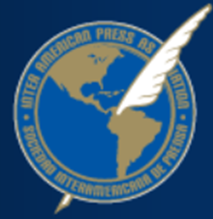 Inter American Press Association (IAPA): Based in Miami, FL. Founded in the late 1940s; now includes 1,400 member publications from Canada to Chile. It monitors and advocates for press freedom throughout the hemisphere; special programs include a Rapid Response Unit deployed when a journalist is killed, twice-yearly reports on press freedom issues in each country, and publication of a “Risk Map” to guide journalists working in the most dangerous countries. IAPA also operates its own separate “Impunity Project,” with detailed information on journalist murders throughout the region.
Inter American Press Association (IAPA): Based in Miami, FL. Founded in the late 1940s; now includes 1,400 member publications from Canada to Chile. It monitors and advocates for press freedom throughout the hemisphere; special programs include a Rapid Response Unit deployed when a journalist is killed, twice-yearly reports on press freedom issues in each country, and publication of a “Risk Map” to guide journalists working in the most dangerous countries. IAPA also operates its own separate “Impunity Project,” with detailed information on journalist murders throughout the region.
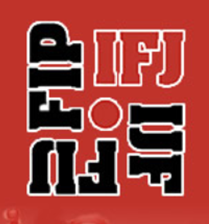 International Federation of Journalists (IFJ): Based in Brussels. Launched, in its modern form, in 1952, IFJ describes itself as the world’s largest association of journalists. It monitors press freedom issues and advocates for journalists’ safety and was a founder of the International News Safety Institute.
International Federation of Journalists (IFJ): Based in Brussels. Launched, in its modern form, in 1952, IFJ describes itself as the world’s largest association of journalists. It monitors press freedom issues and advocates for journalists’ safety and was a founder of the International News Safety Institute.
 International Freedom of Information Exchange (IFEX): Perhaps the most visible role of this Toronto-based organization is as a source of information; it operates what it calls “the world’s most comprehensive free expression information service,” with a weekly e-mail newsletter, a regular digest of articles related to press freedom, and “action alerts” from members around the globe. It has more than 90 member organizations in more than 50 countries. In 2011 it established November 23 as International Day to End Impunity.
International Freedom of Information Exchange (IFEX): Perhaps the most visible role of this Toronto-based organization is as a source of information; it operates what it calls “the world’s most comprehensive free expression information service,” with a weekly e-mail newsletter, a regular digest of articles related to press freedom, and “action alerts” from members around the globe. It has more than 90 member organizations in more than 50 countries. In 2011 it established November 23 as International Day to End Impunity.
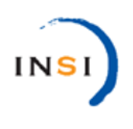 International News Safety Institute (INSI): Based in Brussels. Created in 2003 as a result of an initiative by the IFJ and IPI, it describes itself as “a unique coalition of news organizations, journalist support groups and individuals exclusively dedicated to the safety of news media staff working in dangerous environments.” It conducts training, issues safety tips and manuals, and monitors journalists’ casualties of all kinds, whether violent attacks or accidents.
International News Safety Institute (INSI): Based in Brussels. Created in 2003 as a result of an initiative by the IFJ and IPI, it describes itself as “a unique coalition of news organizations, journalist support groups and individuals exclusively dedicated to the safety of news media staff working in dangerous environments.” It conducts training, issues safety tips and manuals, and monitors journalists’ casualties of all kinds, whether violent attacks or accidents.
 International Press Institute (IPI): Created in 1950, the Vienna-based IPI calls itself “a global network of editors, media executives and leading journalists.” A founder of INSI, it monitors press freedom with an annual World Press Freedom Review, conducts regular missions to countries where it is at risk, and tracks attacks on journalists.
International Press Institute (IPI): Created in 1950, the Vienna-based IPI calls itself “a global network of editors, media executives and leading journalists.” A founder of INSI, it monitors press freedom with an annual World Press Freedom Review, conducts regular missions to countries where it is at risk, and tracks attacks on journalists.
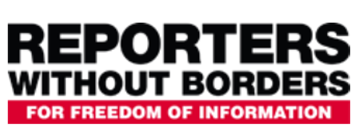 Reporters Without Borders (Reporters Sans Frontières, or RSF): Founded in 1985 and based in Paris, RSF gathers information on press freedom violations and sponsors international missions as needed. Among other activities it provides financial assistance to journalists or news organizations to help defend themselves, and to the families of imprisoned journalists, and works to improve the safety of journalists, especially in war zones. It sells insurance and lends bulletproof vests and helmets at no cost to journalists traveling to dangerous areas.
Reporters Without Borders (Reporters Sans Frontières, or RSF): Founded in 1985 and based in Paris, RSF gathers information on press freedom violations and sponsors international missions as needed. Among other activities it provides financial assistance to journalists or news organizations to help defend themselves, and to the families of imprisoned journalists, and works to improve the safety of journalists, especially in war zones. It sells insurance and lends bulletproof vests and helmets at no cost to journalists traveling to dangerous areas.
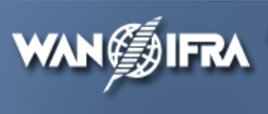 World Association of Newspapers and News Publishers (WAN-IFRA): Founded in 1948 and based in Paris, WAN represents more than 18,000 publications on five continents. In addition to providing support and information on basic industry issues, WAN has a special focus on press freedom, monitoring attacks on journalists, and “conducts long-term campaigns and targeted events with the aim to raise public awareness about critical press freedom matters.”
World Association of Newspapers and News Publishers (WAN-IFRA): Founded in 1948 and based in Paris, WAN represents more than 18,000 publications on five continents. In addition to providing support and information on basic industry issues, WAN has a special focus on press freedom, monitoring attacks on journalists, and “conducts long-term campaigns and targeted events with the aim to raise public awareness about critical press freedom matters.”
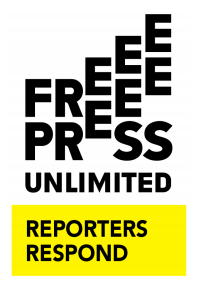 Free Press Unlimited: the Dutch media development NGO has Reporters Respond, an international emergency fund that provides direct assistance to journalists and media outlets, enabling them to resume work as quickly as possible when faced with local obstruction. The group aims to respond to requests within 24 hours.
Free Press Unlimited: the Dutch media development NGO has Reporters Respond, an international emergency fund that provides direct assistance to journalists and media outlets, enabling them to resume work as quickly as possible when faced with local obstruction. The group aims to respond to requests within 24 hours.
Additionally, through their Legal Defense Fund for Journalists, Free Press Unlimited provides financial support for journalists who face prosecution or imprisonment, or are unable to afford legal fees.
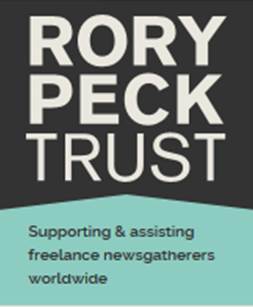 Rory Peck Trust: Based in London, The Rory Peck Trust provides practical assistance and support to freelance newsgatherers and their families worldwide, to raise their profile, promote their welfare and safety, and to support their right to report freely and without fear. Programs include a Freelance Assistance Programme, Freelance Resources, and the Rory Peck Awards.
Rory Peck Trust: Based in London, The Rory Peck Trust provides practical assistance and support to freelance newsgatherers and their families worldwide, to raise their profile, promote their welfare and safety, and to support their right to report freely and without fear. Programs include a Freelance Assistance Programme, Freelance Resources, and the Rory Peck Awards.
March 2022
Additional Reading





